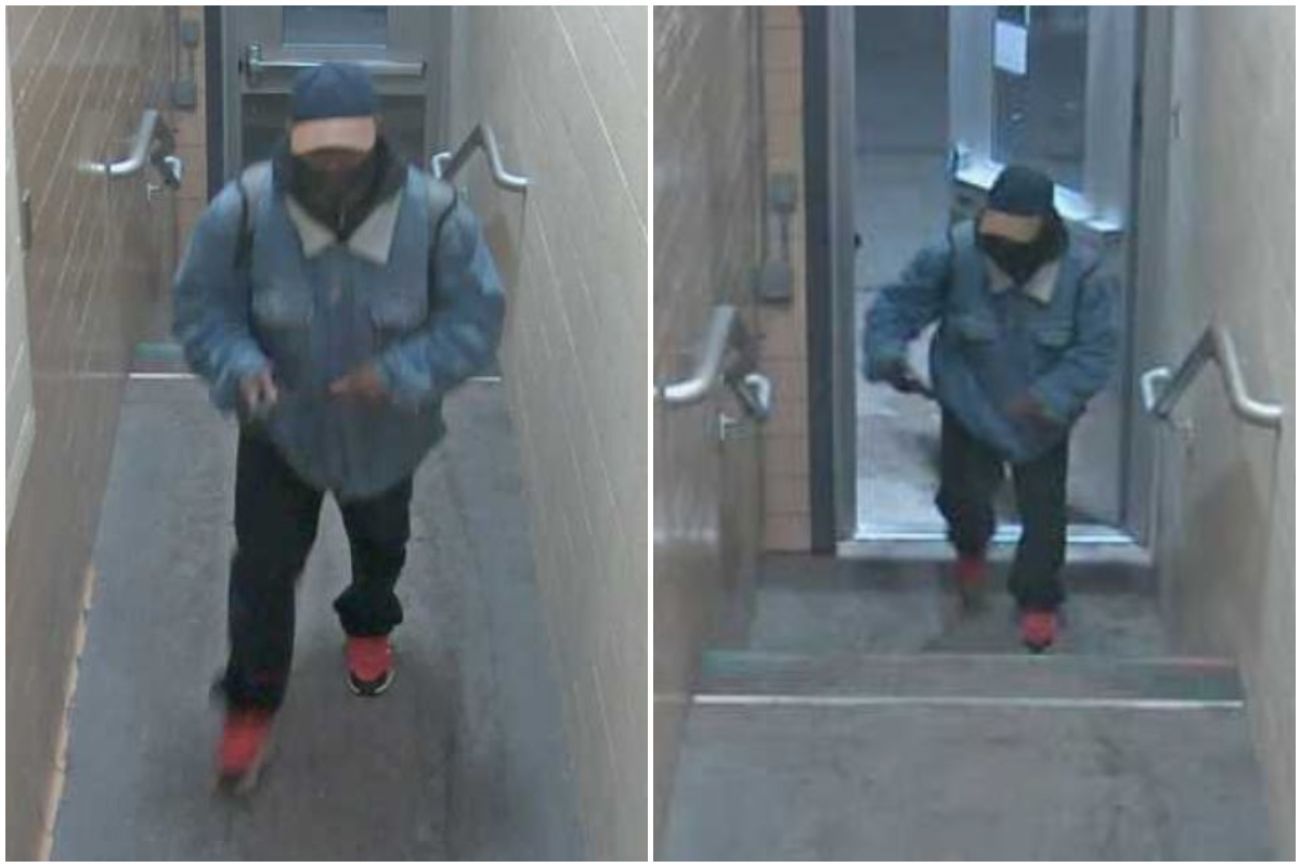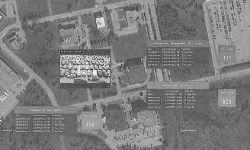Michigan State sought to be leader in campus security. Upgrades came too late

- MSU is moving to live surveillance of its camera system that may have ended a manhunt sooner
- Police needed to comb through camera footage for three hours before finding an image of suspected shooter
- Wayne State has had a live camera monitoring system since 2012
EAST LANSING — Michigan State University police say a surveillance image quickly helped locate a suspected shooter on Monday night — but it first took nearly three hours to find images of him from a sprawling campus camera system the university is upgrading.
Authorities eventually spotted Anthony McRae, 43, of Lansing in video recorded at Berkey Hall, and images of him they blasted out on social media helped police locate him less than 20 minutes later.
But that was hours after McRae had fled campus on foot, unbeknownst to police. Their prolonged manhunt panicked parents and forced students to remain sheltered in fear, even though the shooter was already likely miles away.
Related:
- Michigan State professor details terror of mass shooting in Room 114
- Michigan State dispatch logs: Anthony McRae spotted hours before he was caught
- Ex-prosecutor defends gun plea deal in Michigan State shooter case
- Michigan State shooting update
- Michigan State shooting: Anthony McRae had guns charge, mental health problems
- Michigan State University: Timeline of mass shooting, manhunt
- Michigan State shooting: Night of terror, morning of eerie calm for students
Investigators knew the shooter had been in Berkey Hall and the nearby MSU Union, but they didn’t know which exits he had used.
It took “a little bit of time to locate him due to the number and the volume of cameras we have,” MSU Deputy Police Chief Chris Rozman told reporters on Thursday.
“While people may question the timing, this was an ongoing and complex incident,” he added. “It took a little bit of time to find that image, but we worked valiantly, and I commend our investigators that set their rifles down and turned around and started looking at video on the computer.”
The video review process was supposed to be streamlined under a new centralized security system that outgoing MSU president Samuel Stanley announced in November, saying it would allow for real-time monitoring of more than 2,000 surveillance cameras positioned around campus.
But as the campus was terrorized Monday, MSU was still seeking contractors to build out required technology upgrades. Companies competing for what may be a multi-million dollar contract were scheduled to make in-person or virtual presentations to the university last week.
Announcing the project in November, MSU said its new centralized operation center would be operational by the end of 2022 and, as one of Stanley’s last actions as president, cement his legacy as a champion for campus safety.
But in an interview last fall, MSU Police Chief Marlon Lynch said technology upgrades would take several more months and likely not be completed until late spring of this year, or the fall semester.
Tragedy didn’t wait.
McRae opened fire in Berkey Hall about 8:18 p.m. Monday, killing Arielle Diamond Anderson, 19, of Harper Woods and Alexandria Verner, 20, of Clawson, before moving onto the MSU Union, where he killed Brian Fraser, 20, of Grosse Pointe.
Five more students are critically injured.
Many advantages, some limits
Police at Wayne State University have had the ability to zero in on live video feeds across campus since 2012, Chief Tony Holt told Bridge Michigan.
Dispatchers have a running list of events on the Detroit campus and access the videos to make sure students, staff and others are safe, Holt said.
The chief said the cameras once helped officers track a man who was hugging and kissing students against their will as he walked across campus. The first officers sent to the scene could not find the man, but cameras tracked him to a northbound bus and other officers followed it and arrested the man in Highland Park, Holt said.
If there were an emergency on campus, like a fight, a robbery or a shooting, Holt said dispatchers would immediately search for video while also dispatching officers. “It’s confirming the call and assisting the officers on the way,” he said.
Holt said he was unaware of what capabilities his peers at Michigan State had, but he lauded their response Monday.
“They did an outstanding job,” he said.
Not every building at Wayne State has cameras, Holt said, so the system is not without limitation. He said it’s been upgraded, and he is considering the jump into using artificial intelligence to assess threats recorded on video feeds.
The systems are expensive — costing upwards of $4 million — and require the integration of older cameras, panic alarms, door alarms and other security elements on campus, said Eric Plummer, chief of police at Radford University in Virginia and a board member of the International Association of Campus Law Enforcement Administrators.
The University of Nebraska uses them to give police a “common operating picture” of an unfolding incident, able to watch video feeds from exact locations on campus, Plummer said.
As officers were approaching Berkey Hall, for instance, Plummer said such a system would have allowed dispatchers to tell them if the gunman was in the hallway they were approaching.
“If they have a unified security platform, they would have the ability to monitor it live,” he said.
Such systems have brought controversy.
While some states and cities have banned the use of facial recognition. Michigan has not, despite criticism in Detroit, where a wrongfully arrested Black man sued the city, alleging a racial bias in the technology. Some universities have policies that limit how real-time video technology can be used.
Fixing failed cameras
Michigan State in November sought bids from private contractors to create a "unified security platform” that aims to centralize video feeds, alarms and other systems traditionally overseen by multiple entities across campus.
Bids were due Jan. 11. Companies were scheduled to begin presentations last week, and the university is expected to award the contract by March 3.
The centralized security initiative was announced less than a year after the university acknowledged that 320 of its security cameras were offline when 18-year-old Brendan Santo went missing during a campus visit, prompting a significant and prolonged search.
His body was found weeks later, on campus, in the Red Cedar River.
MSU said at the time its cameras were offline because they contained microchips produced in China and newly banned by the U.S. government.
A spokesperson questioned whether they would have even helped find Santo.
Regardless, MSU touted efforts to replace those cameras last fall, and Stanley said the university had even added 300 more. But the final phase of that project — upgrading them for real-time monitoring — remains a work in progress.
"Getting all the cameras back up and operational was an early step," spokesperson Emily Guerrant told Bridge Michigan on Wednesday.
"Centralizing was another step. And now finding a digital platform that allows us to better monitor and search quickly, thousands of cameras, is another step."
‘Another tool’ for law enforcement
As it seeks companies to build out its planned unified security platform, MSU disclosed that its video systems "are not yet centrally managed," with hundreds of cameras installed on "several different platforms."
The Department of Public Safety oversees about 400 cameras on campus, but its system is not connected to the university alarm network, so "there is not an integrated method to review video in real-time,” the university said in a request asking companies to bid on building out the new system.
The university also has nearly 1,000 residence hall cameras separately managed by Student Life and Engagement, in addition to dozens of independent cameras at the Facility for Rare Isotope Beams and an "unknown number of cameras" overseen by other academic and athletic operations, according to the document.
As one potential contractor explained it in a separate bidding document: "The University has an extensive infrastructure already in place with access and video and simply needs to have these platforms set up to review video in real-time when alarms or issues occur."
The new system envisioned by the university would allow for both live event monitoring and archived video playback, in coordination with more than 26,600 different "alarm points" on the sprawling campus, including 6,628 door contact sensors, 551 motion detectors, 431 duress buttons and more.
If there were another active shooter, and the system was up-and-running, authorities would be able to immediately "know that particular location has X number of cameras and begin automatically pulling the cameras up to help with the overall response," Lynch, the MSU police chief, told Bridge Michigan on Thursday.
There's no guarantee police would have been able to catch McRae any sooner, but real-time video monitoring certainly would have been "helpful," said Lynch, who began spearheading the centralized security initiative alongside Stanley.
"It's another tool" for "operational-decision making," Lynch said. "It's a proven method. There are several larger metropolitan areas that utilize real-time monitoring, and some universities are beginning to implement it."
While MSU is expected to conduct a broad review of security protocols in the wake of Monday's shooting, implementing the new video monitoring system may not still be fully operational until fall, Lynch told Bridge.
Michigan Education Watch
Michigan Education Watch is made possible by generous financial support from:
Subscribe to Michigan Health Watch
See what new members are saying about why they donated to Bridge Michigan:
- “In order for this information to be accurate and unbiased it must be underwritten by its readers, not by special interests.” - Larry S.
- “Not many other media sources report on the topics Bridge does.” - Susan B.
- “Your journalism is outstanding and rare these days.” - Mark S.
If you want to ensure the future of nonpartisan, nonprofit Michigan journalism, please become a member today. You, too, will be asked why you donated and maybe we'll feature your quote next time!





